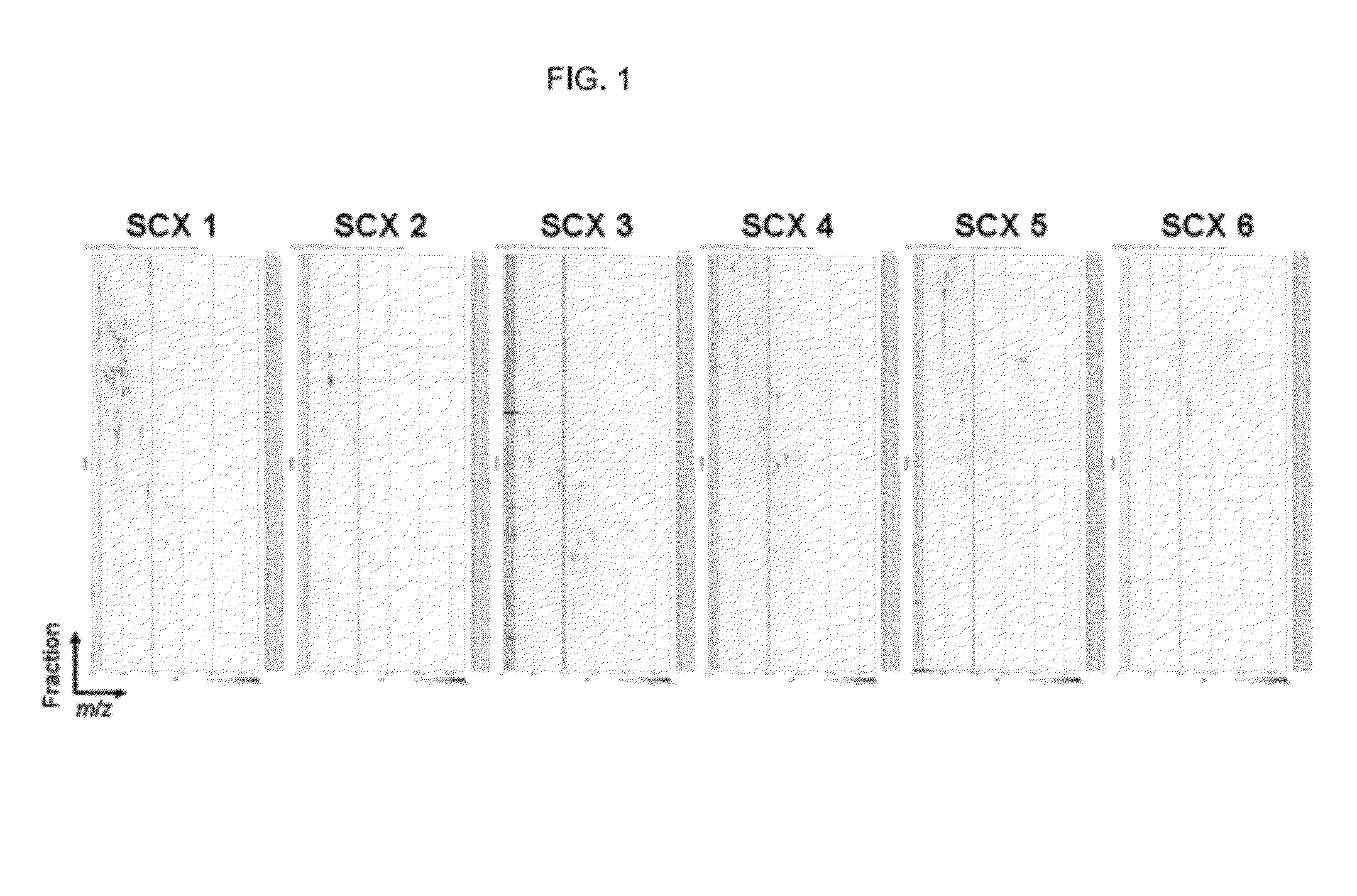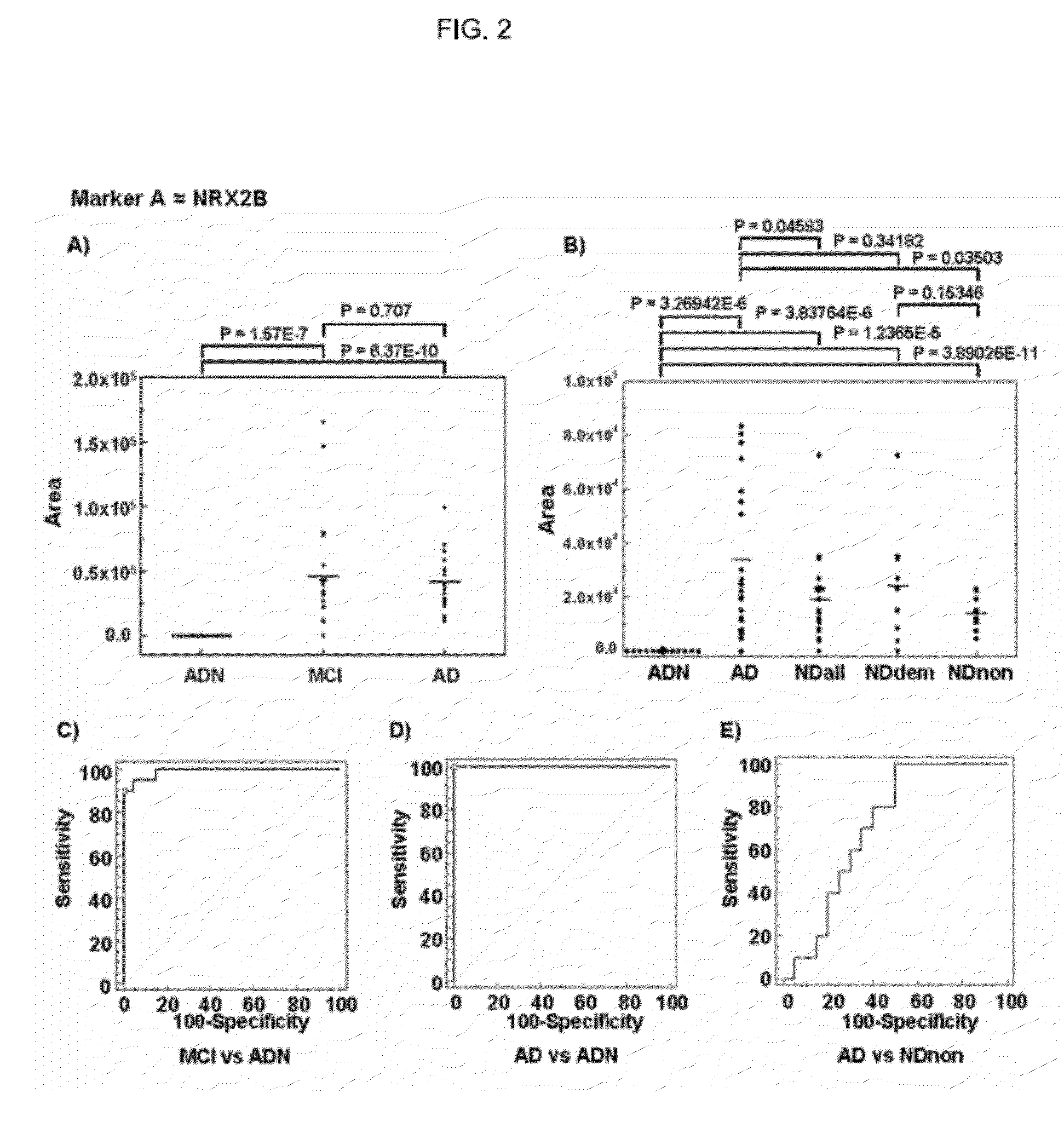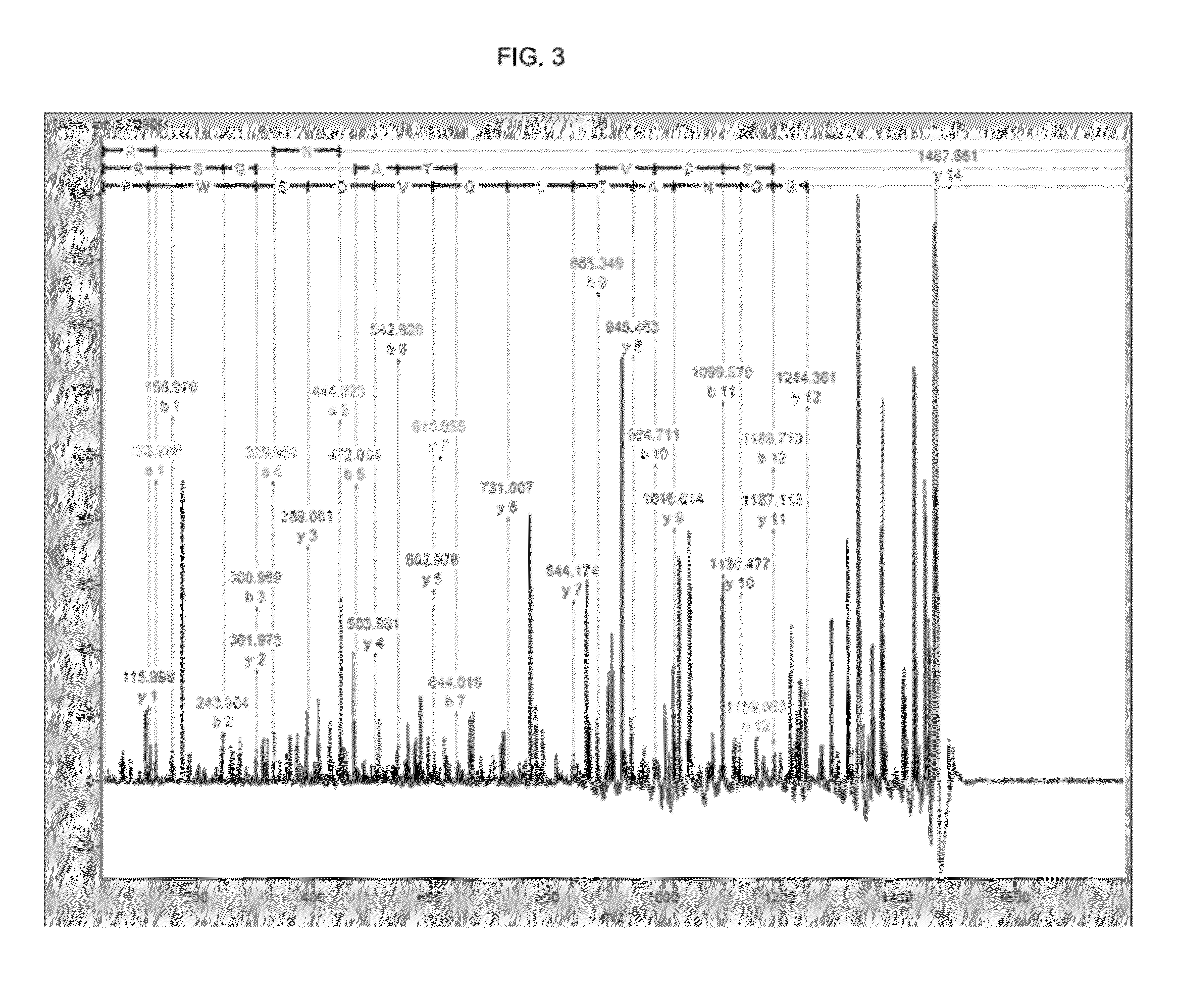Biomarker for psychiatric diseases including cognitive impairment and methods for detecting psychiatric diseases including cognitive impairment using the biomarkers
a biomarker and cognitive impairment technology, applied in the field of cognitive impairment biomarkers, can solve the problems of difficult use of neuroimaging for screening early stage cognitive impairment, inability to widely use neuroimaging in hospitals, and inability to perform neuroimaging, etc., to achieve high accuracy and specificity, highly useful in judgement of drug efficacy, and accurate diagnosis of cognitive impairmen
- Summary
- Abstract
- Description
- Claims
- Application Information
AI Technical Summary
Benefits of technology
Problems solved by technology
Method used
Image
Examples
example 1
Discovery of a Marker Peptide for Detection of Cognitive Impairment Using Two-dimensional Liquid Chromatography (2D-LC)-MALDI TOF-MS
(1) Serum Samples.
[0088]Followings, the characters before the parenthesis are an abbreviation.
[0089]A sera obtained from 20 AD (Alzheimer's disease), 20 ADN (subjects not suffering from psychiatric disease and age and sex-matched patients with AD, “N” means normal), and 20 NDall (neurological disease) were used. NDall consists of 10 NDdem (demented neurological disease) and 10 NDnon (non-demented neurological disease). Furthermore, NDdem consists of dementia with Lewy body and frontotemporal dementia each consisting of 5 cases, and NDnon consists of schizophrenia and depression each consisting of 5 cases.
(2) Methods
[0090]After 475 μl of 0.1% trifluoroacetic acid (TFA) were added in each of 25 μl of sera, samples were boiled for 15 min at 100 degrees. Subsequently, in order to recover peptides of molecular weight of 10,000 or less, ultrafiltration were p...
example 2
Example 2. Synthesis of a Marker Peptide, and Preparation of a Marker Peptide Specific Polyclonal Antibody
[0148]The antigenic peptide was synthesized to prepare the specific antibody that recognizes Neurexin-2-beta precursor-derived peptide NRX2B of SEQ ID NO: 2. The synthetic peptide for coupling to a carrier protein was added the cysteine residue (labeled as C or Cys) in C-terminus. The peptide that was combined with carrier protein (RSGGNATC-KLH, see below) was mixed with an adjuvant, and the mixture was immunized in rabbit. Total eight times immunizations is performed every 1-2 weeks, and the test blood collection performed twice every 4 weeks, and the antibody titers were measured by enzyme immunoassay (EIA). After three months from the start of the immunization, the whole blood was collected from rabbit and the antiserum was obtained, furthermore the purification of the specific antibody was performed using the peptide column that antigen peptide was bound as ligand.
[0149]The ...
example 3
Example 3. Preparation of Antibody-beads
(1) Method
(1-1) Preparation of Antibody, and Binding to Magnetic-beads
[0151]The antibody solution, 1 mg of the antibody (anti-NRX2B antibody, Rabbit IgG) that specifically recognizes the peptide of amino acid sequence expressed by SEQ ID NO: 22 was dissolved with 3 ml of 0.1 M MES. After washing 1 ml (10 mg beads) of the magnetic-beads (Magnosphere MS300 / carboxyl, JSR Corporation) by using 0.1 M MES, the magnetic-beads were mixed with the antibody solution and were gently shaken for 30 min at room temperature.
(1-2) Cross-linking of Antibody and Magnetic-beads
[0152]400 μl of EDC solution (10 mg / ml 1-ethyl-3-(3-dimethylaminopropyl) carbodiimide hydrochloride in 0.1M MES) was added in antibody-beads solution and was suspended gently for 3 hours to bind antibody with beads by covalent bond.
(1-3) Blocking
[0153]1 ml of 200 mM ethanolamine (pH8.0) was added to wash beads, and further 1 ml of 200 mM ethanolamine (pH8.0) was added and was shaken gently...
PUM
 Login to View More
Login to View More Abstract
Description
Claims
Application Information
 Login to View More
Login to View More - R&D
- Intellectual Property
- Life Sciences
- Materials
- Tech Scout
- Unparalleled Data Quality
- Higher Quality Content
- 60% Fewer Hallucinations
Browse by: Latest US Patents, China's latest patents, Technical Efficacy Thesaurus, Application Domain, Technology Topic, Popular Technical Reports.
© 2025 PatSnap. All rights reserved.Legal|Privacy policy|Modern Slavery Act Transparency Statement|Sitemap|About US| Contact US: help@patsnap.com



